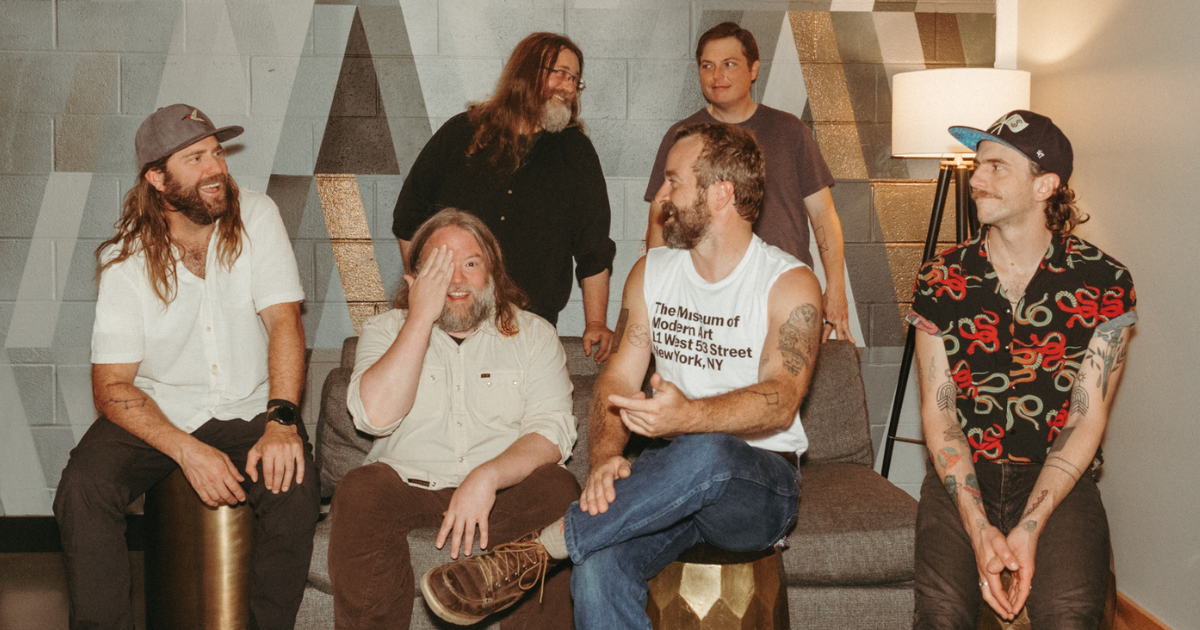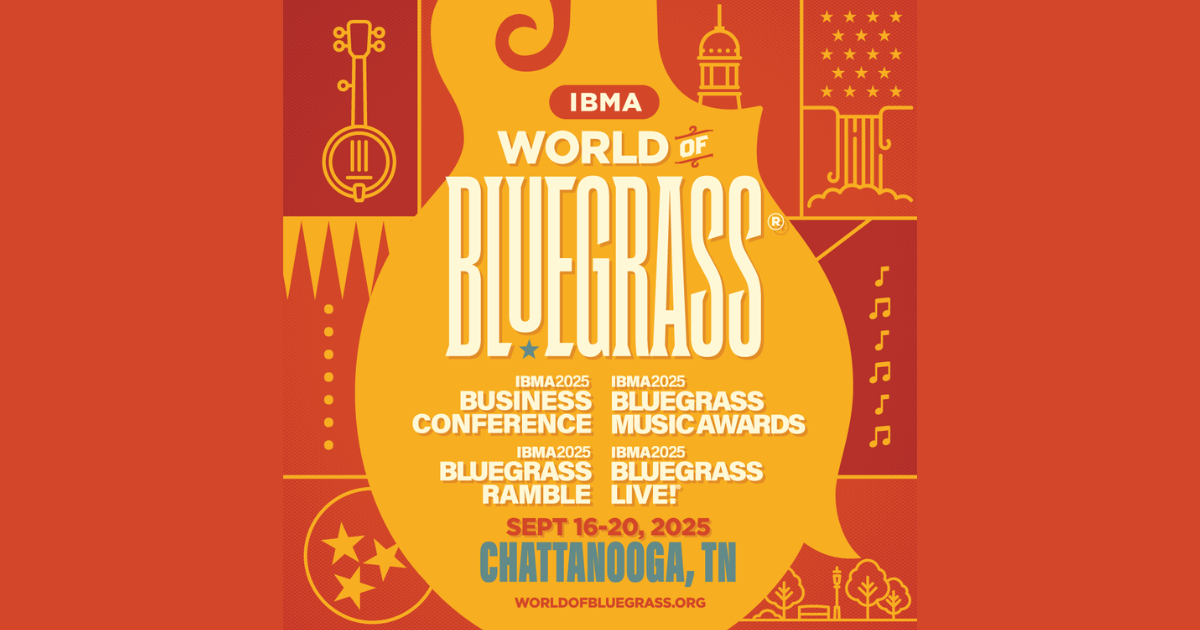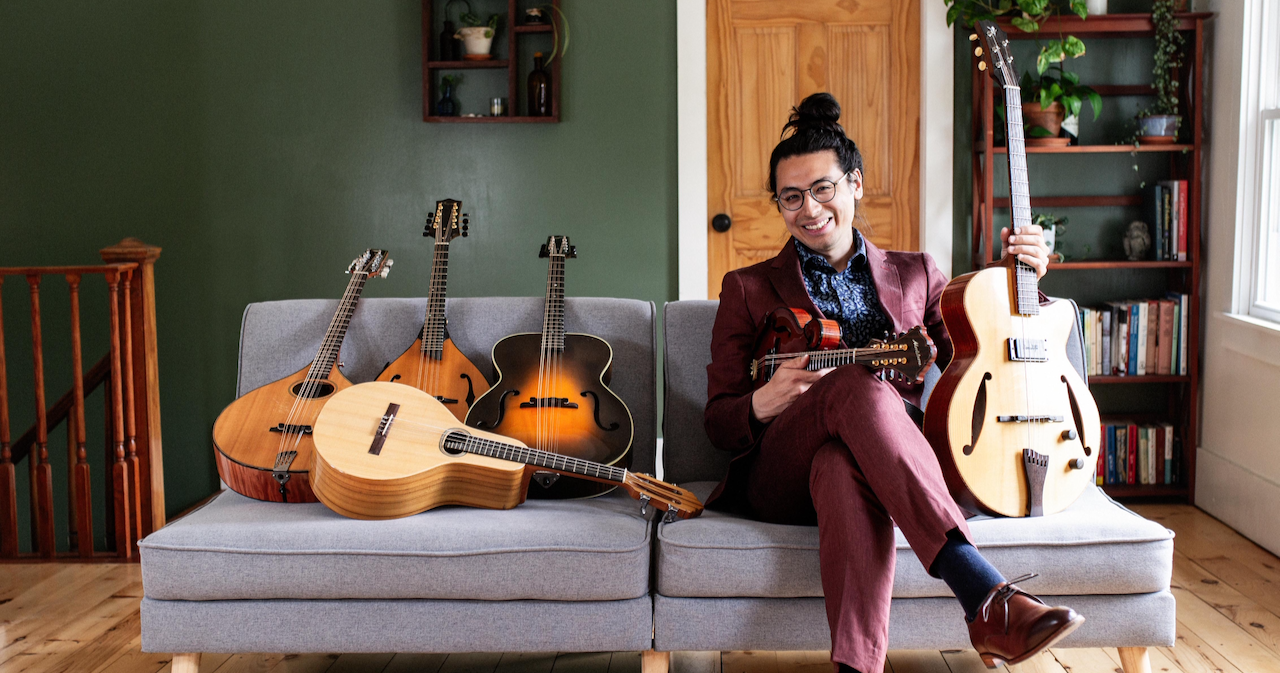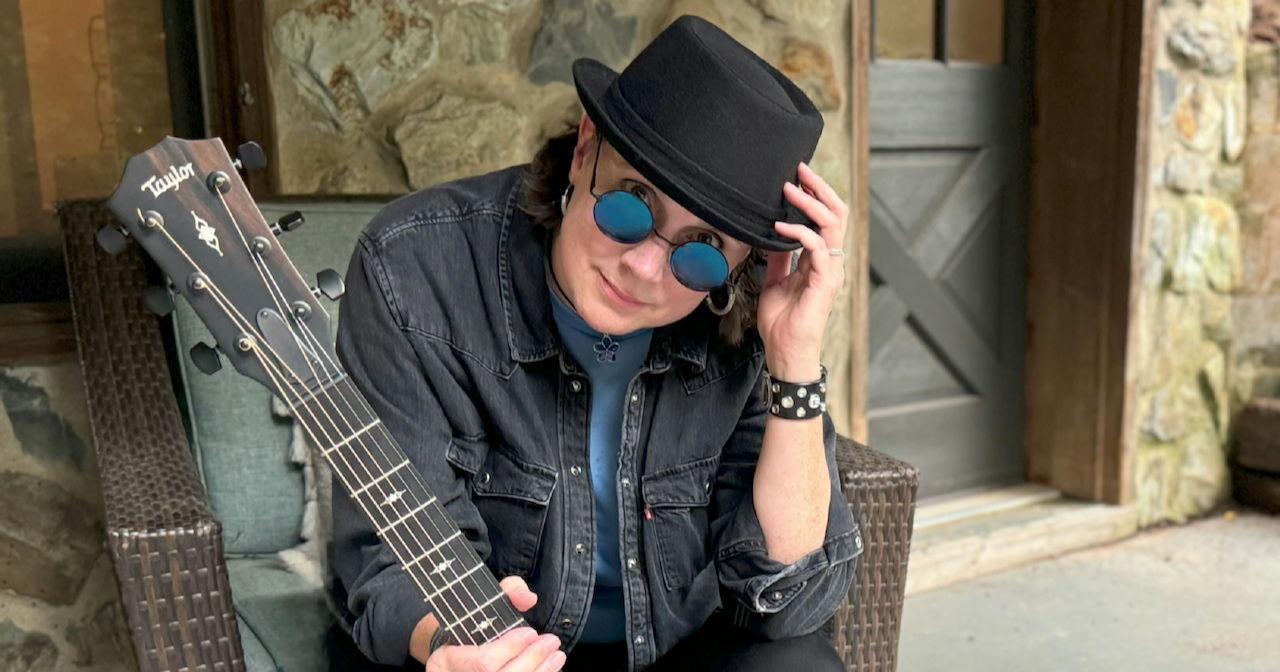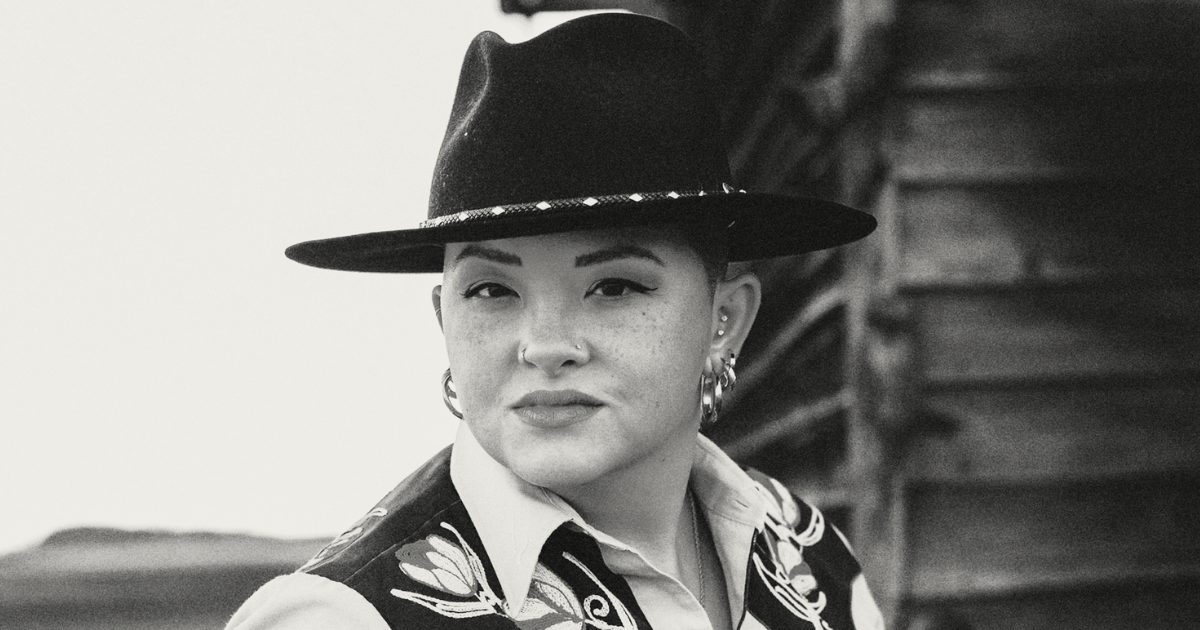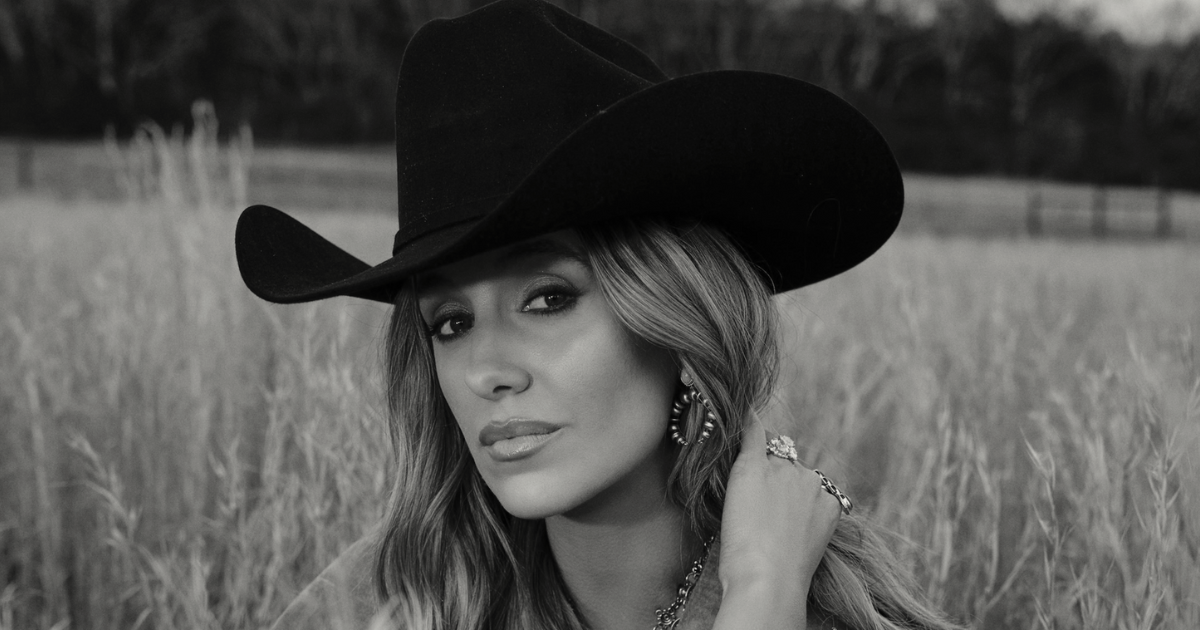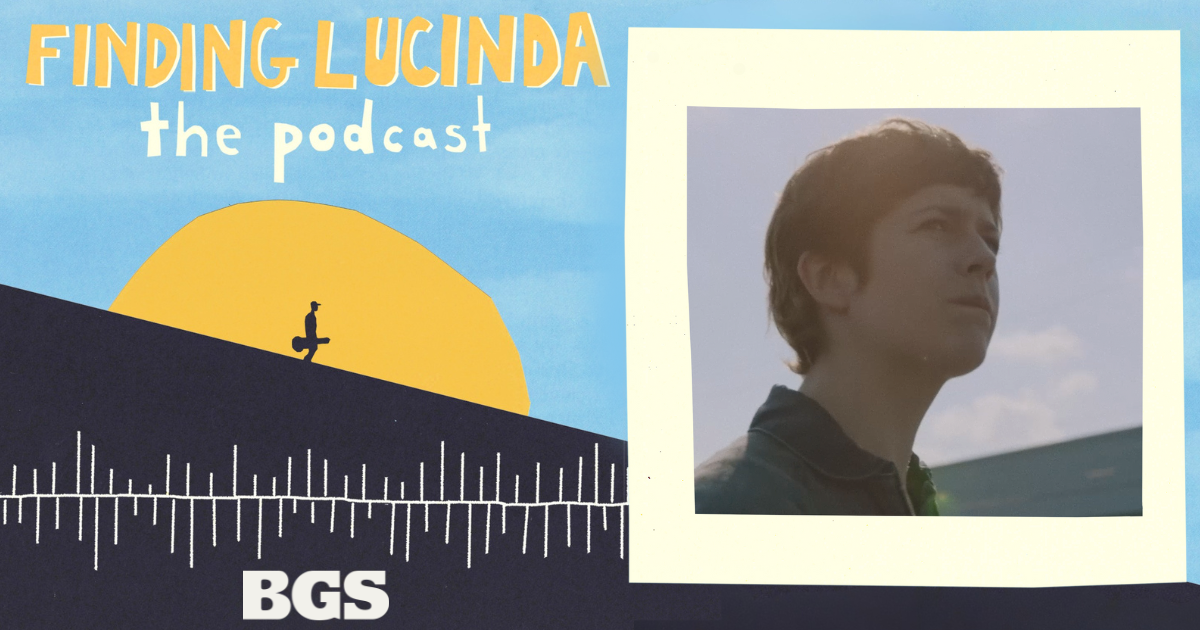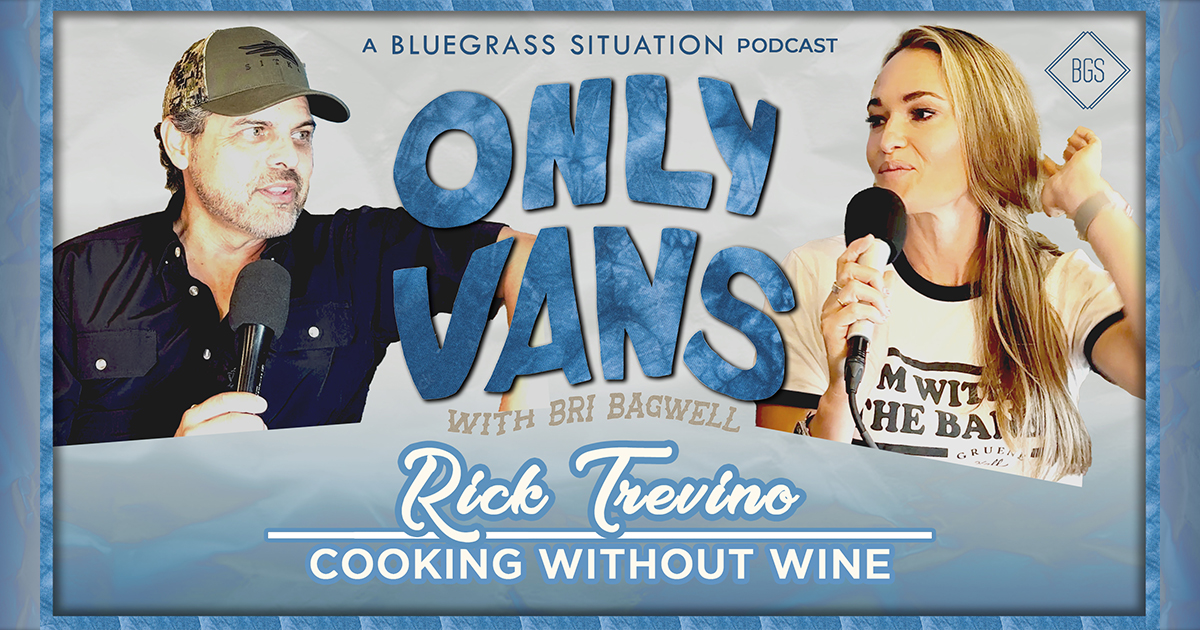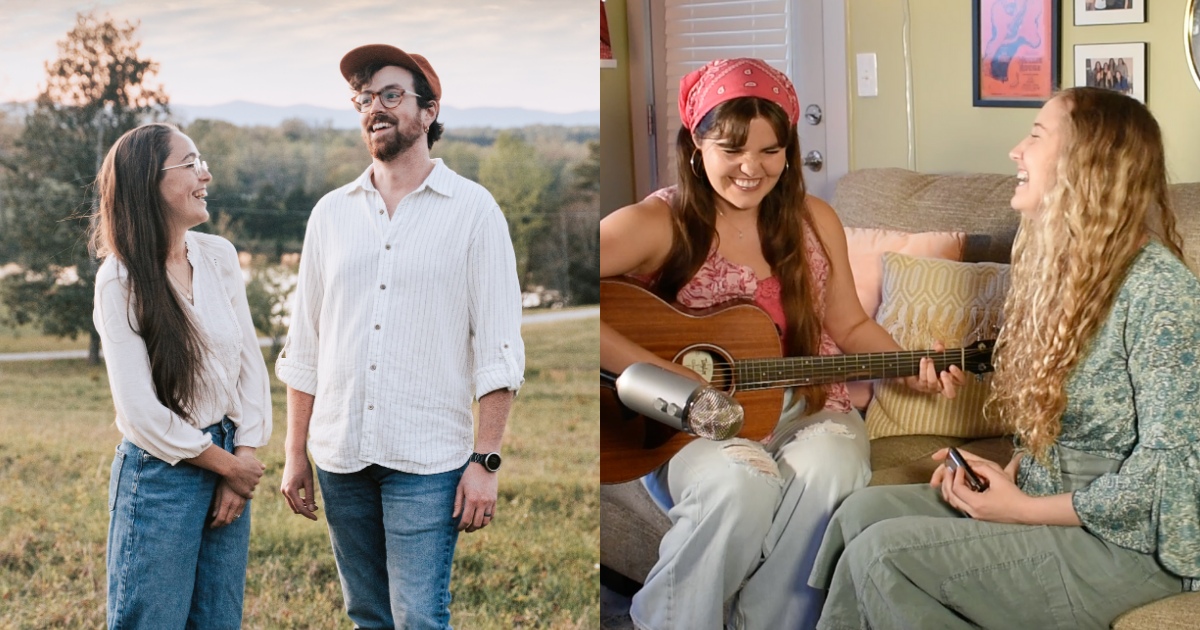Win Tickets to IBMA Bluegrass Live! (Chattanooga, TN) Sep 19-20
Ethan Setiawan’s Personal Encyclopedia Mandolinnica
A short history of the mandolin in America: The mandolin is essentially a small lute which has been around since the 1300s. Italian immigrants brought bowl-back mandolins to the States in the 1800s. Mandolin orchestras were big in the 19th and 20th centuries, believe it or not. In fact, a whole mandolin family exists with mandolas, mandocellos, and mandobasses out there.
Around the turn of the 20th century, Orville Gibson started to develop flat-backed mandolins constructed more similarly to guitars. Finally, in the 1920s, Lloyd Loar created the F5 mandolin, with its longer neck and F holes. These new instruments were built to project and fill a concert hall, though they were ill-timed – the mandolin orchestra craze was fading and not ’til Bill Monroe picked up one of those instruments from a barbershop in Florida in the ’30s did they come back into their own. Since then, bluegrass mandolinists the world over have played these instruments or copies thereof. I play an instrument by John Monteleone, who started innovating on Lloyd Loar’s design in the 1980s – and so the tradition continues.
My new album, Encyclopedia Mandolinnica, turned into a survey of Western and Northern mandolin styles quite quickly. It’s very much been shaped by these inspiring musicians who were very kindly up for playing a duet with me. We go on a real journey through bluegrass both progressive and traditional, old-time, jazz, classical, and Scottish trad. The chance to get to work with these heroes of mine has been such a pleasure and invoked several “pinch me” moments. One of the most beautiful things was getting to see how everyone approached our little 8-stringed instrument so uniquely. I learned something from playing with and working alongside each of the mandolinists that agreed to be a part of the project!
In putting together this playlist I thought about my personal inspirations as well as the mandolin’s place in musical cultures across the world. It ranges from hardcore bluegrass, to Brazilian choro, over to Scottish trad – with lots of things in the middle. It mostly features folks you can hear on Encyclopedia Mandolinnica. I hope you enjoy my guided tour of the mandolin! – Ethan Setiawan
“Victoria” – Ethan Setiawan & Mike Marshall
Mike is a legend of the mandolin. He was an early member of the David Grisman Quintet and went on to collaborate with Darol Anger, among others. He helped write the book on progressive acoustic music and mandolin styles therein. This tune of mine falls within that realm and Mike was the perfect person to play it with.
“Shoulda Seen It Comin’” – Mike Marshall & Chris Thile
Mike also duetted with this young guy Chris Thile, whom you may have heard of. The live record that this cut is from is one of my very favorite recorded mandolin performances. Both mandolinists are at the top of their game. This tune was in my ear quite a bit when writing the previous tune, which maybe you can hear?
“There Will Never Be Another You” – Don Stiernberg
Don is one of the world’s foremost practitioners of jazz mandolin – a combination of words you might have never thought you’d hear. He studied with the great Jethro Burns of Homer & Jethro before forging his own path forward into a style where few mandolinists have ventured. Don was a teacher of mine during high school and it was great fun to get to be in the studio together for Encyclopedia Mandolinnica.
“Jiguaraña” – Ethan Setiawan & Maurizio Fiore Salas
Venezuela has a rich and beautiful mandolin tradition that not many folks are aware of. This tune is a co-write between myself and Maurizio. We took a jig (a Celtic form in 6/8) that I came up with and Maurizio had the bright idea of putting it over a Venezuelan rhythm called guarana (also in 6/8). It’s always a joy to play with Maurizio, he challenges me in the right ways.
“Wonderful” – Kinnaris Q (Laura-Beth Salter)
Laura-Beth is at the forefront of the Scottish trad revolution in Glasgow, Scotland. This track by her band Kinnaris Q puts the mandolin front and center – when she takes the tune at 1:52 check out the facile right hand triplets! We co-direct the Glasgow Mandolin Retreat as well and it’s always great to get a tune with LB.
“Blue Grass Stomp” – Bill Monroe
This is where it all started for a lot of us. Bill Monroe, along with Earl Scruggs and Lester Flatt, in the ’40s had something electric and powerful, so much so that in large part bluegrass has been unchanged since then.
“New Cimarron” – Matt Flinner
Matt Flinner is one of my favorite mandolinists out there. One of the many things that strikes me about his playing is how good it feels. Everything is placed so precisely and beautifully. He also writes great tunes that beautifully synthesize lots of things we love about bluegrass, old-time, and jazz. This is one of my favorite tunes of his.
“Golden” – Ethan Setiawan
In a similar tradition to the last tune, this is my take on a progressive “new acoustic” tune. Darol Anger on the fiddle here, he produced this album and it was such a joy to work with him on it.
“O Voo Da Mosca” – Jacob Do Bandolim
While bluegrass was developing up north, another mandolinist was fusing styles down south. Way down south. In short, choro is a fusion of classical forms with jazz harmony and Afro-Brazilian rhythms – similar on the page to ragtime. Jacob Do Bandolim (which translates to Jacob the mandolin, amazing) wrote many tunes that became staples of the style and was a virtuosic mandolinist to boot.
“Saint Cecilia Caprice” – Hamilton De Holanda
Hamilton De Holanda is the Chris Thile of Brazil. Amazing technically and a great musical mind. He wrote a double album of caprices and made the music public on his website, as well. Every mandolinist reading this: go download them, now!
“Salt Spring” – John Reischman
The greatest modern jam standard of our time! John is another great tune writer. He also gets the most beautiful sound out of the mandolin.
“Shetland Jigs” – Hildaland (Ethan Setiawan)
My own contribution to the Scottish trad lexicon from my duo with fiddler Louise Bichan, Hildaland. These are a couple nice jigs from Shetland. I’m playing mandola here, but I’ve tuned the highest string down a step and put on a capo so that the strings are tuned DAEA. This is inspired by the fiddle, which is crosstuned – common in old-time but not so common in Great Britain. We thought it was a cool connection to draw for our duo which goes between those styles at will.
“Canon at the Twelfth in Counterpoint at the Fifth” – Caterina Lichtenberg & Mike Marshall
Caterina is one of the greatest classical mandolinists to ever live. There have been vital classical mandolin traditions going on this whole time in Italy and Germany, which is so cool to see. Classical music is being made on the mandolin at very high levels and being taught as well.
“Queen of the Earth, Child of the Stars” – Sharon Gilchrist & John Reischman
A beautiful old-time tune, played so beautifully by Sharon on mandolin, John on mandola, and backed up by Scott Nygaard on guitar. I first heard this tune played late at night by Darol Anger and Bruce Molsky at Freshgrass a bunch of years ago now and it’s stuck with me ever since.
“Big Hill” – Ethan Setiawan & Andrew Marlin
Andrew has taken the mandolin scene by storm over the past several years with beautiful tunes and great trad bluegrass playing. Part of the thing that developed with this project was to write something that I thought might work well for each guest – not to explicitly write something that sounded like theirs, but to draw a little inspiration. I think this tune captured something there and I love the way Andrew accompanies the tune.
Photo Credit: Louise Bichan
BGS 5+5: Diane King
Artist: Diane King
Hometown: Nashville, Tennessee (grew up in Beverly, Ohio)
Latest Album: SKY (releasing September 19, 2025)
Personal Nicknames (or rejected band names): D-Music
Which artist has influenced you the most – and how?
I actually have five or six artists who have had a big influence on my songwriting and artistry. But, to pick one: it’s Olivia Newton-John. I heard her song, “Let Me Be There,” on our country radio station in southeastern Ohio when I was around 8 years old. I remember it vividly. We had just pulled into the grocery store parking lot as the song began to play. I asked my mom if we could listen to it before going into the store. She happily obliged and, at the end of the song, the DJ said, “That’s Olivia Newton-John,” and my life was changed.
Specifically speaking to her musical talents, the two things I love most are her beautiful voice and her flawless harmonies. I love vocal harmony and her albums are full of them! But, Livy is so much more to me than a singer or musical artist. In addition to loving her angelic voice, I love her kindness and gentle spirit. And, frankly, she was a light for me. As a young girl, I watched her career and accomplishments and I knew there was something outside of the hills where I was growing up.
Here’s an interesting story. When I was working with Harlan Howard we were going to lunch one day and he asked me who I received my “calling” through. I remember just looking at him and pausing, because I hadn’t known anyone before who understood that, receiving your calling to music through another artist. I knew exactly what he meant. After pausing, I said, “Olivia Newton-John,” and in my mind I reflected back on that day in the car at 8 years old, listening to “Let Me Be There.” Harlan nodded and said, “Yep! I met her once; she was a sweetheart and a great singer!” He proceeded to tell me he received his calling through Ernest Tubb over the radio listening to the Opry in a barn loft in Michigan. It was a moment, for someone to fully understand how another artist can have such profound meaning in your life. That person for me is Olivia Newton-John.
What’s your favorite memory from being on stage?
My favorite memory is going to be when I stand in the circle of the Grand Ole Opry to sing my songs on the live show for the first time!
What’s the most difficult creative transformation you’ve ever undertaken?
I had a five-year battle with and recovery from lymphoma. I had a significant amount of trauma to my neck and throat with multiple procedures and surgeries in that area. Once I finally turned the corner on that cancer battle and the healing began, my voice performed differently. That has been and still is a big adjustment for me. Singing is certainly not as easy as it used to be “BC” (before cancer, as I call it), but I keep at it! I’m so grateful to be writing, singing, and recording again!
What is a genre, album, artist, musician, or song that you adore that would surprise people?
These are some songs that will likely surprise you that stop me in my tracks when I hear them. When they’re playing, I have to stop whatever I’m doing and just listen and be in the song. I can’t function in any other way.
“Uptown Funk” – Bruno Mars
“Nessun Dorma” – Aretha Franklin
“Dancing Queen” – ABBA
“Play That Funky Music White Boy” – Wild Cherry
“Shake It Off” – Taylor Swift
“Shoop Shoop” – Whitney Houston
“Simply the Best” – Tina Turner
“Addicted to Love” – Robert Palmer
“Deborah’s Theme” – Chris Botti
Since food and music go so well together, what is your dream pairing of a meal and a musician?
I so love this question! I can’t even tell you how many times my co-producer, Stephan Oberhoff, and I would use food metaphors to communicate with each other what we wanted to hear when recording a song. Such as me saying, “Stephan, it needs to sound more lush, like a creamy, rich alfredo sauce with a subtle hint of salt.” Or, “Can you make it sound warmer – it needs a dash of nutmeg.” So, yes, I agree that food and music go well together, in many ways! To answer your question: Dolly Parton and fried chicken (with some spice) and waffles with real maple syrup, a side of mashed potatoes with butter, sweet iced tea, and a piece of homemade apple pie a la mode!
Photo Credit: Misti Fahr
Rebecca Porter
Rolls With the Punches
Rebecca Porter has earned some much-deserved praise in the past couple years as she has emerged on the national singer-songwriter scene. Following the release of her 2023 EP, Queen of the Local, she drew the eyes and ears of BGS and Good Country’s founder and was invited to perform at Mountain Stage. Not bad for an artist who had only released five songs total.
Now, however, Porter is back with a full-length album, Roll With The Punches, which released August 8. It’s a concept recording that introduces her life story as if it were a 1970s Western film. If that seems an unlikely concept for a Guam-born, Shenandoah Valley-raised singer-songwriter, Porter concedes that maybe it is – at least on the surface.
In her recent conversation with Good Country about the project, Porter talked about how the concept came together, why she thinks people assume her music is going to sound different than it does, and what she hopes listeners gain from tuning in.
Where did the concept for this album come from? Did you have the idea first, or did the songs sort of come together in this way that started to feel cinematic?
Rebecca Porter: Yeah, I had most of the songs written. Some of them I wasn’t playing out, though, because I wasn’t really sure where they fit or what their purpose was. I started writing “Roll with the Punches” and it felt like it went with some of these other songs. We hadn’t even started talking about recording an album. [But] when I put “Roll with the Punches” with these other songs, they all were autobiographical. I felt like they really could be pieced together in this concept and be brought to life through Western cinema.
I grew up watching spaghetti westerns with my stepdad and family, but [this theme] felt like a way to take control of a narrative that [people may not] see coming from a woman – a woman of color – the term itself, “roll with the punches,” turning that on its head with the record and the songs. [It’s about] not just going with the flow or with what’s said that I’m allowed to have and changing what that actually means for me.
I’m sure people ask you all the time about coming from your cultural heritage as a Southern Pacific Islander and growing up in Appalachia. What is identity to you? What’s your relationship with the concept of identity? Did that have anything to do with this album?
When I talk about the concept itself, I try to be intentional about saying that this is my interpretive lens of Western cinematography, because I’m certainly not an expert on Western cinematography. This is just something that I grew up watching and really loved and enjoyed but, like many things, I just didn’t see myself in. I very much loved what it brought about in the way that I connected with it.
Then, my mixed heritage: Being from Guam, having more Indigenous heritage, growing up in rural Virginia from a young age, my parents divorcing. I very physically represent my Pacific Islander heritage, but I’ve been raised in this rural Appalachian state.
I actually just did a radio interview and was talking about not understanding as a child, but understanding [better] as an adult, with the help of therapy, like, “What is my identity? Are there clear boundaries?” [It’s] like the analogy of the person spinning all the plates. There’s all these moving pieces and it’s complicated. There’s trauma involved. [I’m] embracing that I can be more than one thing. Therapy has really helped me take hold of two or more things to be true at once.
A personal struggle is [wondering,] “Am I a good representation of my ancestors, whoever that is?” You know, physically, I really identify and represent my Chamorro heritage, but I wasn’t raised in Guam. I was raised in the States … by my grandmother, who I have identity and connection struggles [with] at times. My mother and I have gone through a lot in our lifetime together and she’s a huge supporter of mine, but there are very big and real aspects of my life – and who I am as a person, [how] I experience the world – that she doesn’t understand. So then how do I deal with that and how do I process that?
You roll with the punches?
You know, I have to admit, as a white lady in Maine, I feel an obligation to underscore identity for the purpose of representation, but I also recognize that my ability to understand that question and how to word it is clunky at best.
I appreciate you asking. I mean, I’ve certainly been in spaces where people immediately think that I don’t belong or there’s this othering. And then I’ve been in spaces where I’m with people who will just come up and ask, “Why did you pick country music?” or “Why did you decide to do this and not this other kind of music – or your music?” It’s like… A) What does that mean? And B) I grew up in rural Virginia, so this is my music.
Let’s talk about the songs on this album, which are so fantastic. What I love about this album is that it does everything country music does. It’s speaking for the average everyday person on a working-class level – like “The Laundry Pile” and “Payday Loans.” But it also doesn’t get trope-y. I wonder if that is a happy accident, or if it’s something you worked really hard on with editing and crafting these songs.
Sometimes it’s a happy accident. With those songs, particularly, I tried to be really intentional about the things I was saying and how I was saying them. [I was] coming from a real place and personal experience with those things. Laundry is something I struggle with. The day I wrote that song, I had piles of laundry that needed to be done and, mentally, I could not get with the program. You have these things you need to do. They’re simple mundane tasks, you know. “Why is this such a big deal?” So I sat on the edge of the bed and I wrote this song.
In my mind, the topic of authenticity … bring[s] it back to identity. You know, people have questioned the authenticity of me singing country music or, you know, my relationship with [country]. You can hear these songs and feel and know that they’re real and they’re coming from a very real place, real experiences. I may not “look like I sing country music” to some people, but that isn’t where the authenticity comes from in my mind.
“Payday Loans” is the same. You know, payday loans were just part of my childhood. I was really struggling with finances as an adult. [I was stuck in] these cycles that I had learned as a young child – the weight of financial stability. I have a five-year-old and I was trying to reconcile how I talk about and deal with money or financial things in front of my son. … Payday loans were this big weight that I was aware of at a very young age. [I thought of] how terrible that entire system is, but then also how it affected me from that time into adulthood.
Listening to you talk about that as a sort of enculturation goes back to the topic of identity. Realizing what you grew up with, what you want to carry forward, what you want to hand to your children, and what you want to let go of.
Identity is all over this record. I didn’t hear it to that depth until you were just explaining payday loans, but it’s really there as a through line. Do you feel like that was a common thread in this album, tying everything together? Reckoning with what you have been handed and, and what you want to give?
One hundred percent. Roll with the punches. I don’t have to just take what I’ve been handed or allowed to have or been given. I’m finding ways that I can make changes for myself and for my son, or if I ever have more children. [I’m] able to break those cycles.
I want to go back to “The Laundry Pile.” I could be projecting, but it feels straight out of the Dolly Parton canon. It’s a small thing, but it’s also so big – literally and figuratively. You get to this line, “That shit ain’t getting put away.” It’s sort of a resignation, but it’s also empowering to be able to make a decision about it.
That makes the song feel bigger than, “Oh my God, I don’t want to do the laundry.” Was that what you were trying to figure out with the song? Or was it really like, “I’m going to write one for the laundry pile, because I don’t want to fold the laundry?”
It was intentional. I think, when I first started writing it, I [thought,] “This is kind of silly.” But you have to make a decision: Are you going to beat yourself up [about] laundry or not?
You know, you have to decide how you’re going to deal with the situation. The option isn’t just, “You have to get it done.” You can sidestep it or you can save it for another day.
What do you hope people walk away from this project with, once they’ve really dug into it?
I want people to see something that hits home for them, either on a musical level or through the lyrics. I want them to feel seen. I want them to know that everything’s going to be OK. There are ways that we all have the capacity to make changes in our lives. We don’t have to just deal with what we’ve been given and keep going with the flow. You might cause upset, whether it’s personally or externally, but you don’t have to accept what people are willing to give you, or what you’re surrounded by.
That certainly does not mean it’s easy to make changes, but I just want people to feel seen and feel, I guess, even the slightest sense of empowerment. There is something that can change even the smallest piece of their day or where they’re at in a relationship. That there’s some music out there [for them].
Photo Credit: Heather Goodloe
CMA Awards
Nominations Are Here
On Monday, September 8, 2025 the Country Music Association announced the nominees for the 59th Annual CMA Awards. With six nods a piece, country stars Lainey Wilson, Megan Moroney, and Ella Langley tied each other for the lead in total nominations at the longest-running country music awards show. The CMA Awards will be broadcast live from Nashville’s Bridgestone Arena on Wednesday, November 19 at 8 p.m. EST on ABC and will be available to stream the next day on Hulu.
Following Wilson, Moroney, and Langley in nominations is a quickly rising star at the very top of most listeners’ minds these days, Zach Top, who will vie for awards in the Single of the Year, Album of the Year, Song of the Year, Male Vocalist of the Year, and New Artist of the Year categories. Fiddler Jenee Fleenor, a five-time winner of Musician of the Year, is nominated again in the category this year, alongside guitarists Brent Mason, Rob McNelley, and Derek Wells and pedal steel genius Paul Franklin.
In addition to Top and Fleenor other notable nominees from the bluegrass and Americana worlds include the War and Treaty (Vocal Duo of the Year), Chris Stapleton (Entertainer of the Year, Male Vocalist of the Year, Music Video of the Year), and the Red Clay Strays (Vocal Group of the Year).
Shaboozey is nominated for the second year in a row for New Artist of the Year, and relative newcomer to the genre Post Malone gained two nominations this year (remarkably, one less nomination than in 2024), for F-1 Trillion (Album of the Year) and “Pour Me A Drink” featuring Blake Shelton (Musical Event of the Year).
It’s clear that whatever your preferred subspecies of country music, this year’s batch of nominees for the CMA Awards holds more than enough variety to satisfy your tastes. From the most polished radio-ready pop country to gristly full-bore rock and roll, from high femme glamor bops to ’90s vocals (and of course the hairstyles, too), there’s plenty of Good Country to be found among this year’s nominations.
Find the full list of nominees for the 59th Annual CMA Awards below:
ENTERTAINER OF THE YEAR
Luke Combs
Cody Johnson
Chris Stapleton
Morgan Wallen
Lainey Wilson
SINGLE OF THE YEAR
“4x4xU” – Lainey Wilson
Producer: Jay Joyce
Mix Engineers: Jason Hall, Jay Joyce
“Ain’t No Love In Oklahoma” – Luke Combs
Producers: Luke Combs, Chip Matthews, Jonathan Singleton
Mix Engineer: Chip Matthews
“Am I Okay?” – Megan Moroney
Producer: Kristian Bush
Mix Engineer: Justin Niebank
“I Never Lie” – Zach Top
Producer: Carson Chamberlain
Mix Engineer: Matt Rovey
“you look like you love me” – Ella Langley & Riley Green
Producer: Will Bundy
Mix Engineer: Jim Cooley
ALBUM OF THE YEAR
Am I Okay? – Megan Moroney
Producer: Kristian Bush
Mix Engineer: Justin Niebank
Cold Beer & Country Music – Zach Top
Producer: Carson Chamberlain
Mix Engineer: Matt Rovey
F-1 Trillion – Post Malone
Producers: Louis Bell, Charlie Handsome, Hoskins
Mix Engineer: Ryan Gore
I’m The Problem – Morgan Wallen
Producers: Jacob Durrett, Charlie Handsome, Joey Moi
Mix Engineers: Charlie Handsome, Joey Moi
Whirlwind – Lainey Wilson
Producer: Jay Joyce
Mix Engineers: Jason Hall, Jay Joyce
SONG OF THE YEAR
“4x4xU”
Songwriters: Jon Decious, Aaron Raitiere, Lainey Wilson
“Am I Okay?”
Songwriters: Jessie Jo Dillon, Luke Laird, Megan Moroney
“I Never Lie”
Songwriters: Carson Chamberlain, Tim Nichols, Zach Top
“Texas”
Songwriters: Johnny Clawson, Josh Dorr, Lalo Guzman, Kyle Sturrock
“you look like you love me”
Songwriters: Riley Green, Ella Langley, Aaron Raitiere
FEMALE VOCALIST OF THE YEAR
Kelsea Ballerini
Miranda Lambert
Ella Langley
Megan Moroney
Lainey Wilson
MALE VOCALIST OF THE YEAR
Luke Combs
Cody Johnson
Chris Stapleton
Zach Top
Morgan Wallen
VOCAL GROUP OF THE YEAR
Lady A
Little Big Town
Old Dominion
Rascal Flatts
The Red Clay Strays
VOCAL DUO OF THE YEAR
Brooks & Dunn
Brothers Osborne
Dan + Shay
Maddie & Tae
The War And Treaty
MUSICAL EVENT OF THE YEAR
“Don’t Mind If I Do” – Riley Green (featuring Ella Langley)
Producers: Scott Borchetta, Jimmy Harnen, Dann Huff
“Hard Fought Hallelujah” – Brandon Lake with Jelly Roll
Producer: Micah Nichols
“I’m Gonna Love You” – Cody Johnson (with Carrie Underwood)
Producer: Trent Willmon
“Pour Me A Drink” – Post Malone (feat. Blake Shelton)
Producers: Louis Bell, Charlie Handsome
“You Had To Be There” – Megan Moroney (feat. Kenny Chesney)
Producer: Kristian Bush
MUSICIAN OF THE YEAR
Jenee Fleenor – Fiddle
Paul Franklin – Steel Guitar
Brent Mason – Guitar
Rob McNelley – Guitar
Derek Wells – Guitar
MUSIC VIDEO OF THE YEAR
“Am I Okay?” – Megan Moroney
Directors: Alexandra Gavillet, Megan Moroney
“I’m Gonna Love You” – Cody Johnson (with Carrie Underwood)
Director: Dustin Haney
“Somewhere Over Laredo” – Lainey Wilson
Director: TK McKamy
“Think I’m In Love With You” – Chris Stapleton
Director: Running Bear
“you look like you love me” – Ella Langley & Riley Green
Directors: Ella Langley, John Park, Wales Toney
NEW ARTIST OF THE YEAR
Ella Langley
Shaboozey
Zach Top
Tucker Wetmore
Stephen Wilson Jr.
Photo Credit: Lainey Wilson by Cece Dawson.
Finding Lucinda: Episode 10
Ismay wakes up the day after interviewing Mary Gauthier ready to attend a live performance by Lucinda Williams at the Ryman Auditorium. In order to finish out their journey, Ismay hopes to interview Lucinda right before her show and find a conclusion to their road trip. However, it turns out that due to unforeseen circumstances the interview is no longer possible. So, Ismay attends the show anyway and has to make a decision about whether to continue following Lucinda or to move forward. Plus, they meet up with engineer and producer for Car Wheels On A Gravel Road, Ray Kennedy.
LISTEN: APPLE • SPOTIFY • AMAZON • MP3
Produced in partnership with BGS and distributed through the BGS Podcast Network, Finding Lucinda expands on the themes of Ismay’s eponymous documentary film, exploring artistic influence, creative resilience, and the impact of Williams’ music. New episodes are released twice a month. Listen right here on BGS or wherever you get podcasts.
Finding Lucinda, the documentary film that inspired and instigated the podcast, is slated for release on September 9, 2025. Both the film and podcast showcase never-before-heard archival material, intimate conversations, and a visual journey through the literal and figurative landscapes that molded Lucinda’s songwriting.
Credits:
Produced and mixed by Avery Hellman for Neanderthal Records, LLC.
Music by Ismay.
Artwork by Avery Hellman.
Nashville Recording: Recorded at Room and Board Studio.
Sound Recordist: Rodrigo Nino
Producer: Liz McBee
Director: Joel Fendelman
Co-Director & Cinematographer: Rose Bush
Special thanks to: Mick Hellman, Chuck Prophet, Jonathan McHugh, Sydney Lane, Don Fierro, Jacqueline Sabec, Rosemary Carroll, Lucinda Williams, and Tom Overby
Find more information on Finding Lucinda here. Find our full Finding Lucinda episode archive here.
Pre-order the documentary film via Apple TV here.
Rick Trevino on Only Vans
with Bri Bagwell
Today on Only Vans, a living legend. A wordsmith. A wine connoisseur. Rick Trevino joins me in the van to talk about his whole experience of life thus far. We discuss wine, his getting signed Cinderella story, speaking Spanish, tropical music, writing on piano versus guitar, having a writing partner, and his awesome family, too.
LISTEN: APPLE • SPOTIFY • AMAZON • MP3
Rick Trevino is a dang living legend in my book and when his cousin and tour manager Gibby (who has filmed some of my music videos) told me Rick wanted to be on the podcast, I almost died. Then Rick and Gibby showed up with a bottles of wine and whiskey for us and I actually did die.
I think what’s cool about this casual conversation with Rick is that he has gotten to write, record, and sing among so many legendary people – so much so that he just talks about everyone on a first-named basis. Raul is Raul Malo from The Mavericks, for example, and Flaco is of course Flaco Jimenez, rest in peace.
I re-listened to the Los Super Seven records that I had forgotten Rick was a part of, and man, y’all gotta dive back into those! And also all of Rick’s catalog, but especially get to a live show. Thanks for the chat and gifts, Ricky!
You Gotta Hear This: The Foreign Landers, Rachel McIntyre Smith, and More
You Gotta Hear This! We’ve got bluegrass, Americana, folk, and so much more for you in our weekly roundup of new music and premieres.
Kicking us off, Western North Carolina bluegrass greats Balsam Range dust off an old track, “Virginia Girl,” from member Caleb Smith’s archive solo album for their own rendition – with a special “vintage” banjo solo added in. From just down the mountains in upstate South Carolina, bluegrass and roots duo the Foreign Landers share their lovely new song, “Smell the Rose,” which reflects on the good, simple gifts we all receive while walking through life (if we’re open to receiving them!).
Elsewhere in our collection, another folk-Americana duo, Oliver the Crow, return with new music for the first time in a few years, offering a new video for “Burn It Down,” a song about finding redemption in starting over, starting fresh. And Rachel McIntyre Smith – who has been sharing a mini-series of cover song performance video collaborations on BGS over the past few weeks – unveils an impeccable cover of Kacey Musgraves’ “Slow Burn” with fellow artist Sammi Accola joining in.
Don’t miss Natalie Del Carmen singing “El Cortez,” an energetic country-folk song about spending time with her father and the rarity of still enjoying first-time experiences as an adult, when such firsts are much more common as a child. You’ll also hear singer-songwriter Jared Dustin Griffin fingerpicking and growling through “Shovel,” a new track that meditates on sacrifices and all you can gain from the labor of putting yourself aside.
Bringing us vibey indie roots rock, Liam Kazar contemplates “The Word The War” on his new single from his upcoming album, Pilot Light. You can watch the video for this musical exploration of loneliness and the journey (rather than the destination) below. And finally, from all the way across the globe, the High Street Drifters of Melbourne, Australia, introduce their down-under bluegrass to BGS with “Words for Leaving,” a song about distance, longing, and goodbyes – sweet and bittersweet.
It’s a stout collection this week and we’re excited for you to get to it. You know what we say every time– You Gotta Hear This!
Balsam Range, “Virginia Girl”
Artist: Balsam Range
Hometown: Haywood County, North Carolina
Song: “Virginia Girl”
Release Date: September 5, 2025
In Their Words: “In 2013, I was putting together some tunes for a solo album. Patton Wages was my first call to help me with his killer banjo playing. I first met Patton at Everett’s Music Barn in Suwanee, Georgia, around 2005 and I immediately was a fan. We became friends and stayed in touch. He became Balsam Range’s first call if Marc Pruett ever needed to miss a gig and Patton always filled Marc’s great picking with greatness of his own.
“I wrote ‘Virginia Girl’ in March of 2013 and it was slated to be on my solo album along with “God Knows,” “The Touch,” a few more originals, and a few standards. Patton, Aaron Ramsey, Adam Steffey, and Nicky Sanders helped me create the album. I’ve sat on the tune and the album since 2013, frequently revisiting it when Balsam Range needed a tune to add to one of our albums, but ‘Virginia Girl’ has remained unused for 12 years… until now! Balsam Range recut the tune and I had an idea to see if we could fly Patton’s original banjo cut from 2013 to our new 2025 cut and it worked flawlessly, as if it were meant to be. Our engineer Clay Miller at Crossroads Studios in Asheville, North Carolina, worked his magic and did such an awesome job! Patton, I’m honored that you agreed to this and I’m honored to be your friend! We hope you enjoy ‘Virginia Girl.'” – Caleb Smith
Track Credits:
Caleb Smith – Acoustic guitar, lead vocal
Tim Surrett – Upright bass, harmony vocal
Patton Wages – Banjo
Marc Pruett – Banjo
Don Rigsby – Fiddle, harmony vocal
Alan Bibey – Mandolin
Natalie Del Carmen, “El Cortez”
Artist: Natalie Del Carmen
Hometown: Los Angeles, California
Song: “El Cortez”
Album: Pastures
Release Date: September 12, 2025 (song); November 7, 2025 (album)
Label: Torrez Music Group
In Their Words: ‘”El Cortez’ was written for my dad, so I knew early on that I had to get it right. Last holiday, I gambled with him in Vegas for the first time at the El Cortez Hotel. It was such a fun time together. When you’re young, your first experiences go over your head because everything is a first. But then you become an adult and the pool of opportunity to have first experienced memories gets smaller. I have more respect for my parents now than I ever could have understood as a kid. It’s about getting familiar with all the ways you feel rich in life that really don’t involve money.” – Natalie Del Carmen
Track Credits:
Natalie Del Carmen – Vocals, acoustic guitar, banjo
Nick Antonelli – Bass
Amelia Eisenhaeur – Fiddle
Jordan Ezquerro – Organ
Tanir Morrison – Drums, percussion
Amelia Eisenhauer – Percussion
The Foreign Landers, “Smell the Rose”
Artist: The Foreign Landers
Hometown: Travelers Rest, South Carolina
Song: “Smell the Rose”
Release Date: September 12, 2025
In Their Words: “‘Smell the Rose’ was written with our good friend Danielle Yother as a reflection on the good gifts we’re given in this life – things like music shared with friends, laughter around a campfire, sunsets, or driving down a beautiful highway with the windows down. Those moments are full of beauty, but they also slip away with time. In writing this song, we wanted to capture both the joy and the ache of that truth. For us, it points to something deeper: a reminder that while all good things here fade, they’re signposts that lead us to the one source of lasting love and beauty – God himself. Our hope is that this song encourages listeners to savor those fleeting gifts while also looking beyond them to the greater hope we have in him.” – The Foreign Landers
Track Credits:
Tabitha Agnew Benedict – Lead vocals, guitar, banjo
David Benedict – BGVs, mandolin
Danielle Yother – BGVs
Julian Pinelli – Fiddle
Nate Sabat – Bass
Jared Dustin Griffin, “Shovel”
Artist: Jared Dustin Griffin
Hometown: San Francisco, California
Song: “Shovel”
Album: The Perseverance of Sisyphus
Release Date: September 26, 2025
Label: First City Artists
In Their Words: “‘Shovel’ was born in the heat of July 2020, my hands fumbling through unfamiliar fingerpicking patterns until the song unearthed itself. The melody came slow, like digging through hard earth, and the lyrics followed in a single, fevered afternoon. It’s a meditation on sacrifice – how we bury parts of ourselves for something greater and the toll that takes. In the shadow of calvary this song wields its own blade, turning over the soil of belief and what it costs.” – Jared Dustin Griffin
Track Credits:
Jared Dustin Griffin – Guitar, harmonica
Heather Little – Harmonies
Fergal Scahill – Fiddle, mandolin
Nathan Alef – Piano
Matt Greco – Piano, organ
Dave Campbell – Banjo
Frank Swart – Bass
Derrick Phillips – Drums
The High Street Drifters, “Words For Leaving”
Artist: The High Street Drifters
Hometown: Melbourne, Australia
Song: “Words for Leaving”
Release Date: September 3, 2025
In Their Words: “‘Words for Leaving’ began its life at a lonely bus station in between where I was headed and who I was saying goodbye to. We wanted the track to carry that bittersweet feeling, balancing lyrical tenderness with the bluegrass pulse moving you down the road. Every instrument is a part of the dialogue, echoing the goodbyes we say to loved ones knowing that loving someone always carries the possibility of losing them. Being in Australia, so far from much of the rest of the world and with so much distance between places and people, gives this track a weight I think a lot of people will connect with. The push and pull between heartache and hope.” – Justin Vilchez, mandolin
Liam Kazar, “The Word The War”
Artist: Liam Kazar
Hometown: Chicago-raised, Brooklyn-based
Song: “The Word The War”
Album: Pilot Light
Release Date: November 7, 2025
Label: Congrats Records
In Their Words: “I can’t say I know exactly what the word is, what the war is. Utter loneliness at the mountain top, perhaps? Not that I’ve ever been there. Something close to knowing and loving the path, not the destination. Poor sleepless queen and her sleepless nights alone, but whatever, that’s her problem. Get me to the riff!” – Liam Kazar
Video Credits: Directed, produced, and edited by Austin Vesely.
Kevin Veselka – Director of photography
Featuring Emily Neale.
Rachel McIntyre Smith, “Slow Burn” featuring Sammi Accola (Honeysuckle Friend Sessions)
Artist: Rachel McIntyre Smith and Sammi Accola
Hometown: Oliver Springs, Tennessee
Song: “Slow Burn”
Latest Album: Honeysuckle Friend (Deluxe)
Release Date: September 10, 2025 (video); June 27, 2025 (deluxe EP)
In Their Words: “I have had the pleasure of sharing the stage with Sammi Accola at writers rounds over the years, but we had never hung out one-on-one until this recording. I truly felt like we became friends during this session. I think that’s evident in the video. We got lost in the groove of this Kacey Musgraves classic and had so much fun with it. This is the final video in the three-part series with BGS as part of You Gotta Hear This, but the Honeysuckle Friend Sessions continue on my YouTube channel!” – Rachel McIntyre Smith
“I love how naturally it came together – Rachel and I had a completely different song in mind, but the moment I saw the Kacey Musgraves vinyl on her living room wall and we started talking about the mutually loved album, the choice felt easy. ‘Slow Burn’ is just the best – gorgeous, full of harmonies, and somehow both light and grounding. In the middle of a hectic week, it was the perfect song to play. A reminder to slow down, appreciate the people in our life, and laugh at lines like, ‘Grandma cried when I pierced my nose,’ relishing our twenty-something years. I love collaborating with Rachel and celebrating the power and simplicity of a great lyric.” – Sammi Accola
Video Credits: Filmed and edited by Rachel McIntyre Smith.
Watch more Honeysuckle Friend Sessions on BGS here and here.
Oliver the Crow, “Burn It Down”
Artist: Oliver the Crow
Hometown: Nashville, Tennessee
Song: “Burn it Down”
Album: A Feather in a Hurricane
Release Date: September 5, 2025 (single); November 28, 2025 (album)
In Their Words: “‘Burn it Down’ is a song about starting over – a song about building something great and how that sometimes means taking down whatever’s in its place. To illustrate this point, this is my fourth rewrite of a song using this same chorus. Over many years of scratching out verses and starting over, my life itself became a bunch of fresh starts. Maybe this is what led to the final version you hear today – one of the more stripped-back and bare songs from an album of mostly larger, fuller production.” – Ben Plotnick
Track Credits:
Ben Plotnick – Fiddle, songwriter
Kaitlyn Raitz – Cello
Anthony da Costa – All other sounds, producer
Video Credit: Kaitlyn Raitz
Photo Credit: the Foreign Landers by Nicole Davis; Rachel McIntyre Smith and Sammi Accola courtesy of the artists.
Basic Folk:
Rissi Palmer & Miko Marks
This time on Basic Folk, we are checking in with country singer-songwriter and Color Me Country radio host Rissi Palmer and Americana/country artist Miko Marks. The two close friends both came up as Black women in country music in the early part of the 21st century where they experienced gatekeepers and discrimination in the industry, but undeniable love from listeners. Both stepped away from music for several years, but have since come back and found their audiences, artistic grooves, and industry independence. We last spoke with the pair in 2023 (you gotta go listen to that convo if you missed it!) and we have wanted them back on ever since!
LISTEN: APPLE • SPOTIFY • AMAZON • MP3
Rissi and Miko dive into who they think is making waves and positive change in country and Americana. We talk about rising pop-country singer Tanner Adell and her 2023 hit “Buckle Bunny,” a song that’s clearly written for a different kind of country music fan (read: young Black women). Rissi mentions having Mississippi country sensation KIRBY on her show recently and promises her Miss Black America to be a monster of an album. There was a lot of consensus on the podcast that Madeline Edwards has released the best album of 2025 with her record Fruit, where she digs into the extreme grief and extreme joy she experienced after her brother passed away.
Elsewhere, we also touch on the pair’s experiences at Rhiannon Giddens’ inaugural Biscuits & Banjos fest in Durham earlier this year, an event dedicated to reclamation and exploration of Black music. We talk about Alice Randall’s new compilation, My Black Country – The Songs of Alice Randall, a collection of Randall compositions recorded by Black women – including selections performed by both Miko and Rissi. We talk about audiences in London versus the US, a contrast BF co-host Lizzie as well as Rissi and Miko have experienced first hand. In fact, Rissi has been curating a Color Me Country stage at The Long Road Festival in Leicestershire, England, for the past four years. We hope you learn something new, get some insight into what’s happening in Americana for musicians who are Black, and gain some joy from listening to Rissi and Miko’s hilarious banter.
Photo Credit: Cedrick Jones
